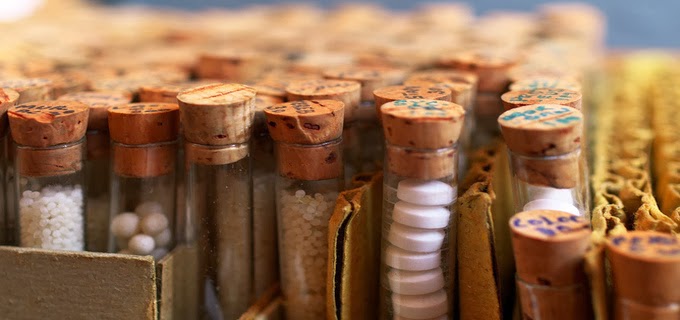Phytolacca is prepared from the roots of a plant, the
fruit of which is toxic when ingested in large quantity. The early symptoms of
the toxicity are vomiting, diarrhoea and headache. Phytolacca is a very important remedy. It resembles Mercury with respect
to many of its symptoms. That is why it is also called Botanical Mercury. The
diseases of Mercury become worse in the cold and humidity. At night also, the
discomfort increases. In Phytolacca also, backache
increases with cold and humidity. When the patient warms up in the
bed at night, the pain intensifies further.
All its ailments aggravate during the night. Both Mercury and Phytolacca
are strongly connected to the diseases of the glands.
Phytolacca acts as an antidote to the toxic effects of Mercury.
The feeling of pain and scraping of the skin over the
sensitive area of the human body, where the skin is closely attached to the
bone without the cushion of muscle or fat, is found both in Phytolacca and Mercury.
Both Mercury and Phytolacca are widely effective against bone pain. Eupatorium too is effective against influenza and the fever associated with severe bone
aches. However, Mercury is the most important remedy for the
treatment of bone problems. Mercury is very effective in the diseases in which
the bones start to decay, with the formation of sinuses.
Phytolacca is very effective against the lesions of the inner linings (mucous membranes),
skin and throat as well as glands that become hardened and have a tendency to produce pus. However,
sometimes it becomes necessary to use Hepar Sulph or Silicea as its helpers. In
Phytolacca, like Hepar Sulph, the phlegm
is thick and sticky. Phytolacca is the foremost remedy for the treatment of syphilis. It
is
also effective in chronic
syphilis and diphtheria. Chronic
joint pains, including rheumatoid arthritis, stiffness of the left shoulder and arm, a lightning type of migrating pain and the pain
at the ankles and forefoot, are all the symptoms of Phytolacca. Phytolacca is
also effective in the treatment of the cancer of the nose. The redness of the eyes,
along with the flow of hot watery tears due to cold, a cough, sensitivity to
light, a burning sensation with a feeling of sand in the eyes, the margins of
the eyelids being hot, an abrased tongue and the feeling of a hot ball stuck in
the throat, are all the symptoms of Phytolacca.
The Phytolacca patient often feels quite dizzy. He feels weak on getting
up from the bed. The headache
moves from the forehead towards the back of the head. The patient
feels pressure in the eyes and the temples. The headache becomes worse during the rain. If there
is itching on the head, accompanied with the formation of bumps and scabs, then
Phytolacca can also be a good remedy. Phytolacca is an exceptional remedy for breast-feeding
women. If the mammary glands become indurated and sensitive with a tendency
towards cancer, these women should be treated with
Phytolacca without any delay. Besides Phytolacca, Bryonia, Belladonna
and Conium can also be useful. In Belladonna, the mammary glands
are not only hardened but also become red. However, in Bryonia,
the glands harden, but there is no redness. Even the slightest
movement is unbearable. In Bryonia and Phytolacca, the glands become
stone hard. The milk of a Phytolacca woman is sour, poisonous and
in clotted form. Breast-feeding the baby is very painful. The
pain spreads throughout the body. (For details on Conium, please
refer to the relevant chapter). Phytolacca is also useful for women
in whom the breast
milk is either deficient of dries up completely.
Before and during the menstruation, the breasts become swollen and
tender. In these women, the cold weather affects the mammary glands
causing them to become painfully hard. The breast milk becomes
thready like a spider web. If,
while breast-feeding, a women develops convulsions
and the pain spreads all over then Phytolacca is the treatment of choice.
Frequent menstruation and excessive bleeding (menorrhagia) is also a symptom of Phytolacca. Usually these
women develop a pain in the right ovary. In Phytolacca, the stomach feels injured. The
vomitus is sticky. Phytolacca is also useful in the treatment of nausea associated with pain and
a feeling of heat in the stomach, as well as bleeding
piles. Phytolacca is very useful in the teething problems of the children. Children clench their teeth forcefully
leaving their marks on the tongue. Phytolacca ailments aggravate in humid and
cold weather, during night and on movement. The discomfort subsides in dry, hot
weather and on taking rest.
One form of Phytolacca called Phytolacca Berry is very
famous in the treatment of
obesity. I have treated several patients with it and have seen
excellent results. Although Phytolacca is not as dangerous for the heart
patients as Fucus, yet some patients with weak heart feel weaker while using
Phytolacca. If so, Phytolacca should be immediately discontinued. Furthermore,
the patients desirous of losing weight must, as a rule, be given Crataegus Q,
which strengthens the heart. Fucus is more effective against obesity however it
must be used with extreme care. As soon as the patient feels weakness of the heart,
Fucus should be immediately stopped or there is a danger that the patient may
have heart attack any time, which may prove fatal.





